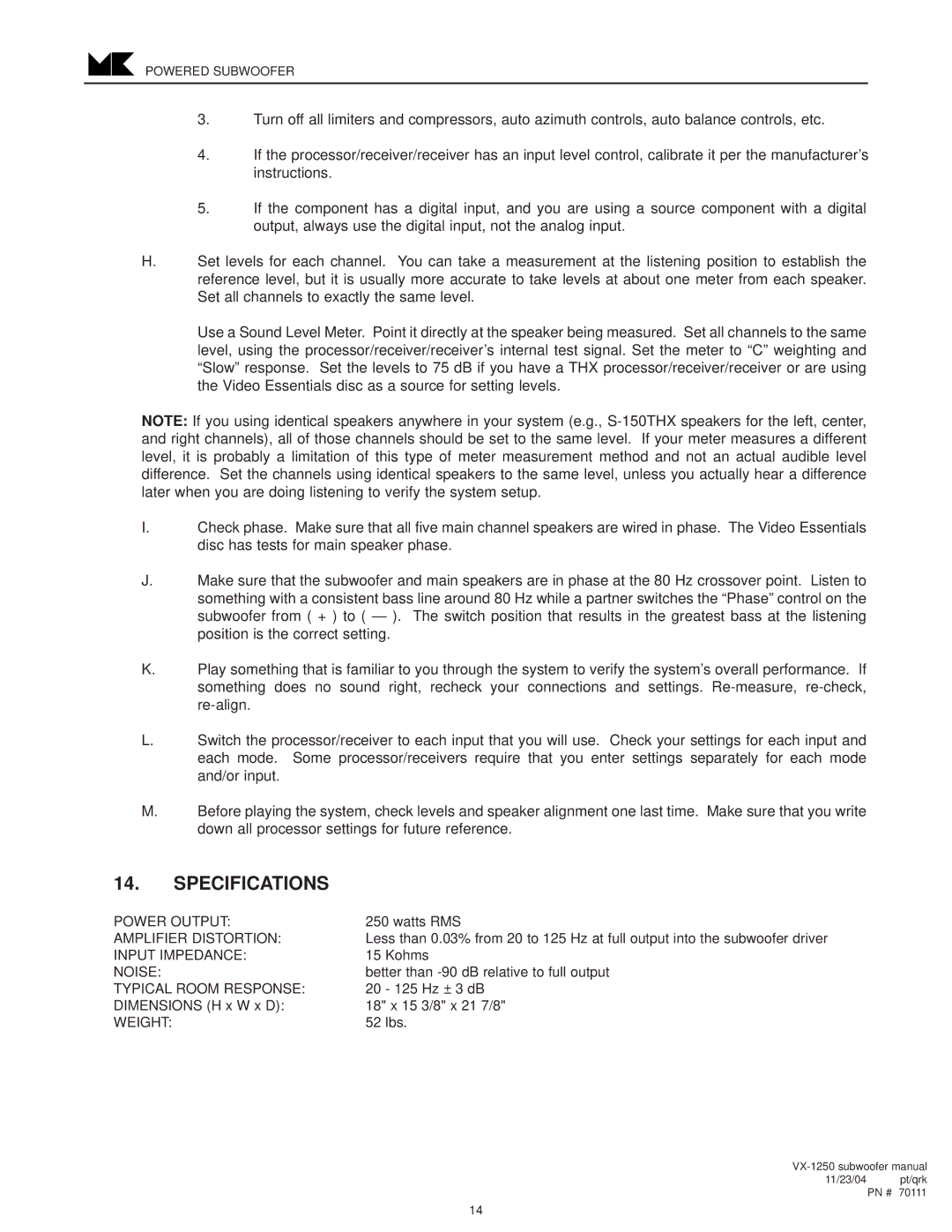POWERED SUBWOOFER
3.Turn off all limiters and compressors, auto azimuth controls, auto balance controls, etc.
4.If the processor/receiver/receiver has an input level control, calibrate it per the manufacturer’s instructions.
5.If the component has a digital input, and you are using a source component with a digital output, always use the digital input, not the analog input.
H.Set levels for each channel. You can take a measurement at the listening position to establish the reference level, but it is usually more accurate to take levels at about one meter from each speaker. Set all channels to exactly the same level.
Use a Sound Level Meter. Point it directly at the speaker being measured. Set all channels to the same level, using the processor/receiver/receiver’s internal test signal. Set the meter to “C” weighting and “Slow” response. Set the levels to 75 dB if you have a THX processor/receiver/receiver or are using the Video Essentials disc as a source for setting levels.
NOTE: If you using identical speakers anywhere in your system (e.g.,
I.Check phase. Make sure that all five main channel speakers are wired in phase. The Video Essentials disc has tests for main speaker phase.
J.Make sure that the subwoofer and main speakers are in phase at the 80 Hz crossover point. Listen to something with a consistent bass line around 80 Hz while a partner switches the “Phase” control on the subwoofer from ( + ) to ( — ). The switch position that results in the greatest bass at the listening position is the correct setting.
K.Play something that is familiar to you through the system to verify the system’s overall performance. If something does no sound right, recheck your connections and settings.
L.Switch the processor/receiver to each input that you will use. Check your settings for each input and each mode. Some processor/receivers require that you enter settings separately for each mode and/or input.
M.Before playing the system, check levels and speaker alignment one last time. Make sure that you write down all processor settings for future reference.
14.SPECIFICATIONS
POWER OUTPUT: | 250 watts RMS |
AMPLIFIER DISTORTION: | Less than 0.03% from 20 to 125 Hz at full output into the subwoofer driver |
INPUT IMPEDANCE: | 15 Kohms |
NOISE: | better than |
TYPICAL ROOM RESPONSE: | 20 - 125 Hz ± 3 dB |
DIMENSIONS (H x W x D): | 18" x 15 3/8" x 21 7/8" |
WEIGHT: | 52 lbs. |
11/23/04 pt/qrk PN # 70111
14
